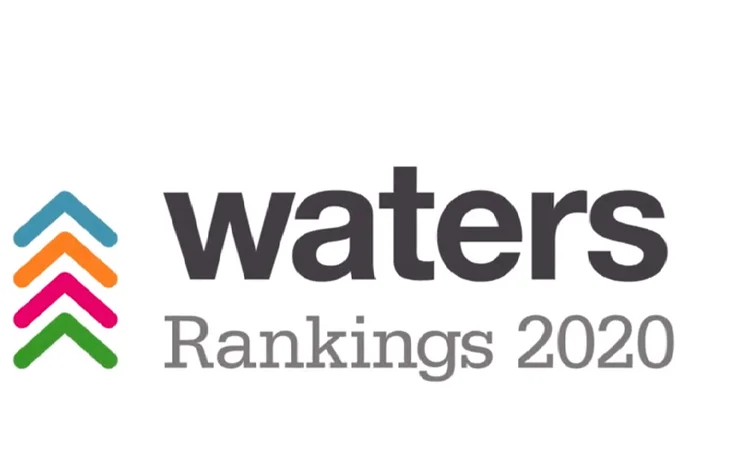Waters Rankings 2020: Best Low-Latency Data Feed Provider—S&P Global Market Intelligence

When people think of low-latency feeds, they inevitably picture raw exchange feeds, microwave transmission, and ultra-fast switches and feed handlers. But as the cost of achieving meaningful latency gains increases, and the return on investment from pursuing outright latency gains gets smaller, data consumers are looking at other areas where speed can make a difference.
As a result, the winner of this year’s best low-latency data feed provider category, S&P Global Market Intelligence, represents a departure from previous winners, capturing readers’ votes for its Event-Driven Alerts (EDA) feed. EDA isn’t a pricing feed, but is rather a low-latency XML feed of transcript content from events such as earnings calls, with millisecond-level timestamps, and embedded with metadata that identifies the company, what kind of call it is, and even which company executive is speaking, using natural-language processing and entity recognition tools developed by recent acquisition, Kensho.
“Hedge funds and investment managers are all coming up with new and different ways of testing this—using it alongside traditional data, or other data they have in-house,” says David Coluccio, managing director of data management solutions at S&P Global Market Intelligence. “There are so many ways they can look at this contextual data. For example, they can use it to spot red flags and to identify similar companies without those red flags, or capture data points that are not reported as financial items in a document.”
S&P has a historical dataset of millisecond-timestamped transcript data for back-testing that goes back to 2016, when it launched EDA, and 10 years’ total of non-timestamped transcripts. As clients test the service, they are suggesting other ways to develop the dataset. For example, some clients are asking for the original audio of earnings calls alongside the transcript so they can analyze the tone of a speaker’s voice, Coluccio says.
The vendor is considering adding its proprietary sentiment scores to the text of call transcripts. But its main focus for the future of EDA is to seek out and integrate unique datasets from data partners that can add insights to EDA, and incorporate them into the feed, ensuring that all datasets are linked and structured to make them easy to use alongside other content.
Only users who have a paid subscription or are part of a corporate subscription are able to print or copy content.
To access these options, along with all other subscription benefits, please contact info@waterstechnology.com or view our subscription options here: http://subscriptions.waterstechnology.com/subscribe
You are currently unable to print this content. Please contact info@waterstechnology.com to find out more.
You are currently unable to copy this content. Please contact info@waterstechnology.com to find out more.
Copyright Infopro Digital Limited. All rights reserved.
You may share this content using our article tools. Printing this content is for the sole use of the Authorised User (named subscriber), as outlined in our terms and conditions - https://www.infopro-insight.com/terms-conditions/insight-subscriptions/
If you would like to purchase additional rights please email info@waterstechnology.com
Copyright Infopro Digital Limited. All rights reserved.
You may share this content using our article tools. Copying this content is for the sole use of the Authorised User (named subscriber), as outlined in our terms and conditions - https://www.infopro-insight.com/terms-conditions/insight-subscriptions/
If you would like to purchase additional rights please email info@waterstechnology.com
More on Awards & Rankings
Witad Awards 2024: Technology innovator of the year (vendor)—Christy Bremner, SS&C Technologies
Christy Bremner, senior vice president, Institutional & Investment Management (I&IM) division at SS&C Technologies, wins technology innovator of the year (vendor) in the 2024 Women in Technology and Data Awards.
Witad Awards 2024: EDM professional of the year—Neslihan Yegul, S&P Global Market Intelligence
Neslihan Yegul, vice president, head of EDM and thinkFolio at S&P Global Market Intelligence, wins EDM professional of the year in the 2024 Women in Technology and Data Awards.
Witad Awards 2024: Technology innovator of the year (end-user)—Laura Hamilton, Bank of America
Laura Hamilton, global head of corporate treasury, credit risk, climate risk, and financial forecasting technology at Bank of America, wins technology innovator of the year (end-user) in the 2024 Women in Technology and Data Awards.
Witad Awards 2024: Vendor professional of the year (data and operations)—Joanna Davies, OSTTRA
Joanna Davies, head of trade processing at OSTTRA, wins vendor professional of the year (data and operations) in the 2024 Women in Technology and Data Awards.
Sell-Side Technology Awards 2024: Best sell-side front-office platform—Bloomberg
Product: Bloomberg TOMS
Most read
- Chris Edmonds takes the reins at ICE Fixed Income and Data Services
- DTCC urges affirmation focus ahead of T+1 move
- FactSet looks to build on portfolio commentary with AI


